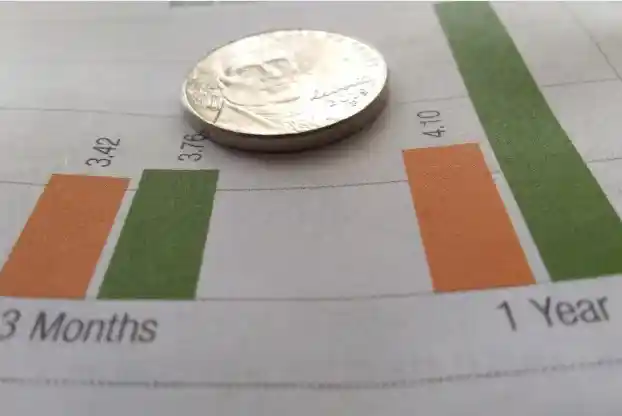White Oak Impact Fund: Investing in a Sustainable Future

In today’s world, people are looking for ways to invest in opportunities that not only grow their wealth but also positively impact society and the environment. The White Oak Impact Fund is one such investment vehicle, aiming to combine financial success with meaningful, measurable change.
As a leading player in the impact investment space, White Oak Impact Fund has captured the attention of both investors and philanthropists by addressing pressing global challenges through its targeted investments.
What is the White Oak Impact Fund?
The White Oak Impact Fund is a financial entity designed for individuals who want to invest their money in projects that promote positive social and environmental outcomes. Founded in 2015, this fund aims to generate strong financial returns while addressing global issues like renewable energy, affordable housing, healthcare, and education. It focuses on making investments that improve people’s lives and help the planet, making it stand out from traditional investment options that only prioritize profit.
The mission of the White Oak Impact Fund is straightforward: to invest in ventures that drive progress in areas such as climate change, social inequality, and access to essential services, all while delivering competitive returns to investors. It operates on the belief that businesses can grow and be profitable while being socially responsible.
Sectors of Focus
The White Oak Impact Fund invests in various sectors that aim to make a positive difference. The main areas it focuses on include:
Renewable Energy
With the growing demand for clean energy, White Oak supports projects that reduce carbon emissions and provide sustainable energy solutions. This sector is critical in fighting climate change and helping communities transition to cleaner energy sources.
Affordable Housing
Housing is a basic human need, yet many people worldwide struggle to find affordable and safe homes. White Oak invests in projects that build and improve housing options for low-income families and marginalized communities.
Healthcare
Access to quality healthcare remains a significant challenge in many parts of the world. White Oak focuses on healthcare initiatives that improve patient care, expand medical access, and address health disparities in underserved regions.
Education
Investing in education is essential for social progress. White Oak invests in educational projects to provide better learning opportunities, particularly in areas with limited access to quality education.
By investing in these sectors, the White Oak Impact Fund helps address some of the world’s most urgent issues and ensures its investors see solid financial returns.
How Does the White Oak Impact Fund Work?
The White Oak Impact Fund operates like a traditional investment fund but focuses on projects that promote social and environmental change. Investors put their money into the fund, which is used to support various initiatives, from building wind farms to funding educational programs. The fund aims to generate financial returns for investors while tracking the impact of its investments.
Each investment made by the White Oak Impact Fund undergoes a thorough review process to ensure it meets the fund’s high standards. This includes an assessment of the potential social and environmental benefits and the project’s financial viability. The fund uses a mix of equity, debt, and hybrid investments to ensure flexibility and maximum impact.
Social and Environmental Impact Metrics
One of the key aspects of the White Oak Impact Fund is its commitment to measuring the impact of its investments. This goes beyond just tracking financial returns. For every investment, the fund evaluates its success in terms of how it benefits society and the environment. Some of the primary metrics used to measure social and environmental impact include:
Job Creation
The investment helped create many jobs, which is especially important for areas where people struggle to find work. More job openings allow families to earn money, support themselves, and contribute to their communities. New jobs often mean better local services, more businesses, and a brighter future for everyone.
This can be a big deal for places where many people don’t have steady work, as it brings stability and growth to the area. The investment plays a key role in helping people find work and improve their lives by creating a stable local economy.
Community Development
This investment brings money and positive changes to the community. With the new opportunities, people in the community might experience better housing, improved schools, or healthcare facilities. The investment can help communities become safer and healthier by supporting local businesses and encouraging new services.
Such improvements can make life easier for everyone, giving people a sense of pride and belonging. In places where people have limited opportunities, this kind of investment can really improve living standards and the overall happiness of the community.
Carbon Footprint Reduction
The investment also works toward helping the planet by reducing the carbon footprint, which refers to the pollution created by activities. Lowering carbon emissions means cleaner air and a healthier environment for plants, animals, and people. Reducing these emissions is essential for fighting climate change and protecting our world.
The investment shows a commitment to the Earth through projects like cleaner energy, such as wind or solar power. A smaller carbon footprint means that future generations will have a better chance to live in a world with less pollution and more natural beauty.
Resource Conservation
This investment cares for nature by saving resources and protecting biodiversity, including various plants and animals. Using water, energy, and land wisely ensures there’s enough for future generations. When investments are made to conserve resources, they reduce waste and promote sustainability.
This also includes preserving areas where animals live so they aren’t forced to move or disappear. By using resources responsibly, the investment shows respect for the planet and helps keep the natural world balanced and beautiful for everyone to enjoy.
These metrics allow the White Oak Impact Fund to show investors exactly how their money is making a difference, not just in terms of returns but also in improving the world.
Success Stories
Over the years, the White Oak Impact Fund has seen significant success in driving financial returns and positive change. A few standout projects include:
Renewable Energy Investments
White Oak has invested heavily in renewable energy projects, such as solar farms and wind turbines, that provide clean energy to underserved areas. These investments have helped reduce carbon emissions and provided affordable energy to communities that previously lacked access to electricity.
Affordable Housing Projects
White Oak has funded affordable housing projects in multiple countries that give low-income families access to safe, sustainable living conditions. These projects provide homes and improve countless individuals’ quality of life by fostering more robust communities and creating economic opportunities.
Healthcare Improvements
By investing in healthcare startups and medical facilities, the fund has made it easier for people in rural or low-income areas to access healthcare services. This has improved health outcomes and reduced medical costs for underserved populations.
Investment Strategy
The White Oak Impact Fund takes a balanced approach to investing. While its primary goal is to make a positive impact, the fund also ensures that its investors see solid financial returns. This is achieved by carefully selecting projects that are not only socially and environmentally beneficial but also financially sound.
The fund’s investment strategy is built on a few key principles:
Rigorous Selection Process
White Oak carefully reviews each potential investment, making sure it meets the fund’s goals and has a high chance of financial success. This means they look at every part of the project in detail to see if it’s a good fit.
By doing this, they make sure that only the best projects are chosen. The goal is to pick investments that can grow over time and benefit everyone involved. This selection process helps avoid risky projects, so investors’ money is placed in projects with a good chance of succeeding.
Diversification
White Oak doesn’t just invest in one type of project; they spread their money across different areas, such as technology, healthcare, and more, in various locations. This “diversification” approach helps reduce the risk of losing money.
When the investments are spread out, the others may still succeed if one project does not do well. This increases the chances of the fund achieving positive results overall. By investing in different projects, White Oak helps ensure their fund is safer and more likely to succeed in the long run.
Risk Management
White Oak uses special tools and techniques to handle and control risk. Managing risk means protecting investors’ money, even if the markets become unpredictable or face tough times. By watching for problems early on, White Oak can make intelligent choices to reduce losses.
This includes checking market trends, keeping up with new information, and planning. Their goal is to keep investors’ money as safe as possible while still allowing for growth opportunities. This approach helps investors feel secure, knowing their funds are managed responsibly and carefully.
By adhering to these principles, the White Oak Impact Fund has delivered consistent returns to its investors while addressing global challenges.
Challenges in Impact Investing
While the White Oak Impact Fund has seen great success, impact investing has challenges. Some of the main obstacles faced by the fund include:
Market Risks
Investing money always comes with some risks. For impact investments, this means the possibility that things might go differently than planned because of market changes. Imagine a big storm or sudden rule change – these things can make it harder for projects to succeed.
If the economy is struggling or government rules suddenly change, it can impact the progress of these projects. For example, if a government decides to cut funds for clean energy, this could slow down projects meant to help the environment, making it harder to reach the goals set by investors.
Measuring Impact
When people invest to create good things, like cleaner air or better schools, they want to see how much good their money is doing. But measuring this impact is challenging. Even though there are many tools to measure things like how many people got jobs or how much pollution was reduced, it’s not always clear how much positive change a project is making.
Some changes, like improved happiness or better health, can be hard to measure in numbers. So, while impact investors aim for positive change, tracking that change can sometimes feel like guessing.
Regulatory Challenges
Each country has its rules about investing money, which can be tricky to navigate. This makes it challenging for impact investors to start new projects in different countries. Imagine if you wanted to start a project in one country but then discovered that their money laws differed from where you started.
These differences in rules can make it slower and more complicated for investors to expand their impact into other places. Sometimes, investors must hire experts to help understand these laws, which can take time and extra money.
Despite these challenges, the White Oak Impact Fund remains committed to its mission and continues to find innovative solutions to overcome these obstacles.
Leadership and Team
The success of the White Oak Impact Fund can be attributed mainly to its strong leadership team. A group of experienced professionals with backgrounds in finance, social entrepreneurship, and sustainability leads the fund. These individuals bring a wealth of knowledge and expertise to the fund, helping to guide its investments and ensure that it stays true to its mission.
In addition to its leadership team, the White Oak Impact Fund has an advisory board of industry experts. This board provides strategic guidance and helps ensure the fund makes suitable investments to achieve its goals.
The Future of White Oak Impact Fund
The White Oak Impact Fund has ambitious plans to expand its impact. Some of its future projects include:
Green Housing Initiatives
The fund plans to invest in new affordable housing projects that use sustainable building materials and energy-efficient designs. These initiatives will help provide more housing options while reducing the environmental impact of construction.
Global Healthcare Expansion
White Oak wants to expand its healthcare investments to reach more underserved populations, particularly in rural and low-income areas.
Renewable Energy Expansion
With climate change increasingly urgent, White Oak plans to increase its investments in renewable energy projects. These initiatives will help reduce carbon emissions and promote cleaner, more sustainable energy sources.
Conclusion
The White Oak Impact Fund is a prime example of how investing can do more than grow wealth. By focusing on sectors like renewable energy, healthcare, and affordable housing, this fund has made a significant difference in the world, all while delivering solid returns to its investors.
With a clear mission, a substantial investment strategy, and a commitment to measuring social and environmental impact, the White Oak Impact Fund is paving the way for a new kind of investing that benefits both people and the planet. If you also want to read about Natasha Mae Fester then visit that post.
FAQs About the White Oak Impact Fund
What is the White Oak Impact Fund?
The White Oak Impact Fund is a specialized investment fund designed to generate financial returns and contribute to social and environmental improvements. By investing in companies and projects with a mission to create sustainable impact, it seeks to address pressing societal needs while ensuring solid financial performance for its investors.
The fund aims to balance profit with purpose, targeting ventures that promote long-term social and environmental growth. Thus, it provides a valuable option for socially conscious investors.
What sectors does the fund focus on?
The White Oak Impact Fund primarily invests in sectors pivotal for sustainable development, such as renewable energy, affordable housing, healthcare, and education. These sectors are chosen for their potential to drive positive social and environmental change while offering substantial growth opportunities.
By focusing on these critical areas, the fund seeks to contribute to building a more equitable and sustainable future, addressing some of the most urgent issues facing society today.
What is the minimum investment amount?
The minimum White Oak Impact Fund investment generally starts at $50,000. This level allows investors to participate meaningfully in the fund’s growth and impact while remaining accessible to those with moderate investment portfolios.
The fund’s entry point is designed to attract both seasoned investors looking to diversify into socially responsible investing and those new to impact investing.
How is the impact measured?
The White Oak Impact Fund measures its impact using an array of social and environmental metrics. These include indicators like job creation, community benefits, and carbon footprint reduction, ensuring that investments are generating positive change.
By rigorously tracking these metrics, the fund can provide transparency to investors about the real-world effects of their capital, allowing them to see how their investment contributes to meaningful, measurable improvements in social and environmental outcomes.
Can non-accredited investors participate?
Currently, the White Oak Impact Fund is open only to accredited investors, individuals, or entities that meet specific financial criteria established by regulatory bodies. However, the fund is actively exploring future opportunities for broader participation, including pathways allowing non-accredited investors to engage in impact investing.
This could expand access to sustainable investing options, making impact investments available to a more diverse range of investors in the future.





